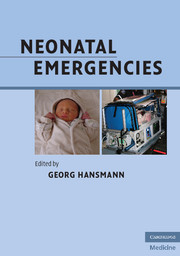Book contents
- Frontmatter
- Contents
- List of contributors
- Foreword (1)
- Foreword (2)
- Preface
- Acknowledgments
- Section 1 Organization of neonatal transport
- Section 2 Basics in cardiopulmonary resuscitation of newborn infants
- Section 3 Classic and rare scenarios in the neonatal period
- Section 4 Transport
- Transport of preterm and term infants
- Acute antenatal transfer
- Questions for review
- References (Section 4)
- Section 5 Appendix
- Index
- Plate section
- References
Questions for review
from Section 4 - Transport
Published online by Cambridge University Press: 05 March 2012
- Frontmatter
- Contents
- List of contributors
- Foreword (1)
- Foreword (2)
- Preface
- Acknowledgments
- Section 1 Organization of neonatal transport
- Section 2 Basics in cardiopulmonary resuscitation of newborn infants
- Section 3 Classic and rare scenarios in the neonatal period
- Section 4 Transport
- Transport of preterm and term infants
- Acute antenatal transfer
- Questions for review
- References (Section 4)
- Section 5 Appendix
- Index
- Plate section
- References
Summary
How may the likelihood of problems on transport be minimized? See pp. 493–503.
Under which conditions may stabilization before transfer be deferred? See pp. 493–503.
What steps are required in the specific preparation of a patient for transfer? See pp. 493–503.
What are the components of proper patient sign out to the NICU team following transfer? See pp. 493–503.
How may cold stress be minimized during infant transfer? See pp. 493–503. Figure 2.10, p. 34.
What methods are available to measure arterial blood pressure during transfer? See pp. 493–503.
What are the most common causes of infant deterioration during transfer? See pp. 493–503.
List the potential problems caused by gas within body compartments during transfer by aircraft. See pp. 493–503.
What are the most common indications for antenatal transfer? See p. 504.
What are the potential maternal complications of antenatal transfer? See p. 505.
- Type
- Chapter
- Information
- Neonatal Emergencies , pp. 506Publisher: Cambridge University PressPrint publication year: 2009



